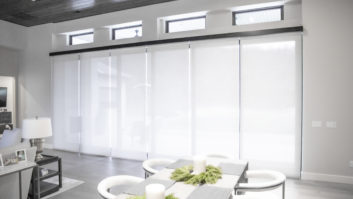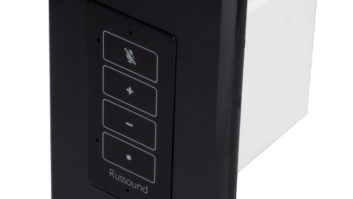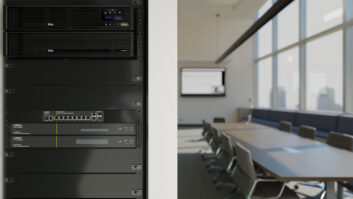Let’s get ready to talk about…SWITCHES!
Hello…? Anybody there…?
Look, I get it — network switches aren’t the cool and buzzworthy things you are normally interested in reading about, and I’m betting you’ve never given a client sales presentation that included, “And let me tell you about this managed switch! It’s going to blow your socks off!”
But we can all agree that one of the most important things we install in a client’s home is a solid and reliable network. Remember CEDIA’s “Own the network, own the home!” mantra a few years back? Having solid network performance has only become a more important requirement since then, and that isn’t likely to change in the foreseeable future.
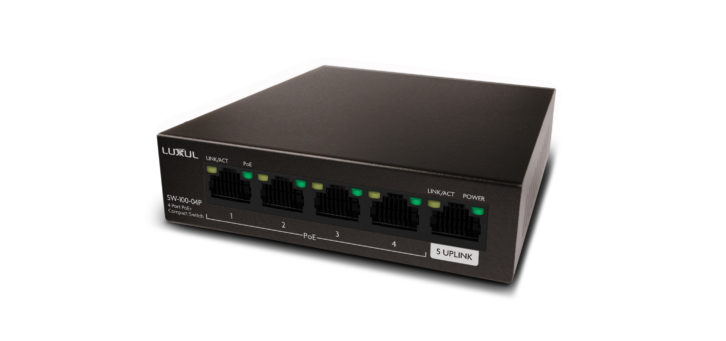
One thing I learned from completing the Pakedge Certified Network Administrator (PCNA) course was that the center of a home’s network is not the router — it’s the switch. This has to do with the way network layers work, and it’s the switch that connects all devices on a local network together — even the wireless ones — receiving, processing, and forwarding data across the LAN. The switch stores MAC address and port numbers in its table, and knows where to send the network traffic.
Another thing exploding in popularity across our projects is the proliferation of power over Ethernet (PoE) devices. Whether PoE is used to power wireless access points, other switches, cameras, control processors, shades, door stations, touchscreens, lighting devices, or something else, it is becoming a go-to for ease of use. And having a solid, managed PoE switch in the rack will not only help you have a more reliable and robust network, it will greatly clean up rack clutter by eliminating a ton of power injectors.
So, yeah, let’s get ready to talk about the new Luxul PoE switches, because they offer some pretty standout features that you should definitely consider for your upcoming installs.
The Lineup
Luxul launched a trio of new managed L2/L3 Gigabit PoE+ switches this year, and they took home a Residential Systems “Best of Show” award at CEDIA Expo. These include two large 48-port PoE+ models, SW-510-48P-F and SW-610-48P-F, and the 24-port PoE+ SW-610-24P-R.
One big differentiator to be aware of is the -R and -F in the model names, with the -F indicating front facing ports and the -R indicating rear facing ports. So, plan your rack/install accordingly.
The SW-510 and -610 models are identical in performance save for one thing: the uplink speed. The 510 features four SFP (small form-factor pluggable) ports; these are limited to Gigabit speed, whereas the four SFP+ ports on the 610 models feature 10 Gigabit ports. Additionally, these ports can be used separately or aggregated in any combination (1+3, 2+2, or 4), meaning you could get up to 4 GB (510) or 40 GB (610) transfer speeds between switches.
Why is this important? When you need to connect multiple switches, you want that data flow to be lightning-fast between them. These SFP ports can utilize a fiber-optic cable to carry gobs of data over great distances, meaning a switch in a secondary rack would have no lag or bottleneck. And since fiber is immune to EMI, isn’t prone to lightning strikes, and has virtually no attenuation, it is a perfect solution for switch-to-switch connection. (Remember, an Ethernet cable is limited to a 100-meter run between devices.)
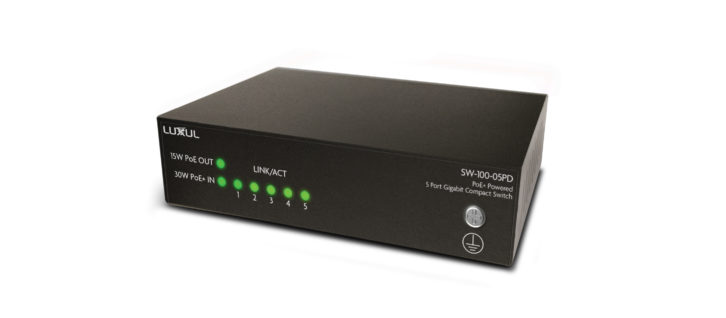
These managed switches all feature a new hardware security module (HSM) chip, which makes them more impervious to hacking. Additionally, they are now Linux-based, which allows Luxul to make the switches more feature-rich, as well as offering the ability to add more features going forward.
To improve high-traffic handling, they also feature a better backplane for faster switching speeds, supporting full-duplex 1 Gbps bandwidth on all ports. They are ProWatch Integrated for easier integration with Luxul’s remote management software and offer higher PoE budgets of 370 and 740 watts for the 24- and 48-port models, respectively.
Unlike the older (now discontinued) AMS-4424P and XMS-7048P from Luxul, these new switches are not capable of being stacked. While stacking had its benefits — great in large AV over IP installations, and allowing you to see all switch ports under a single UI — it had its limitations, such as needing to have identical switches stacked; an expensive proposition if you needed just a couple of more ports. Stacking is not supported with the new chipsets, and, in order to be more future-proof, Luxul had to drop that capability.
Luxul also launched some smaller, application-specific unmanaged switches with the SW-100-04P and the SW-100-05PD, which will give you some fantastic options at the edge of your network. Not only are these small enough to fit virtually anywhere — say mounted behind a flat-panel display — these are cheap enough where you can keep a couple in your vans to have available to solve a problem. Additionally, there is a new SW-100-08P 8-port GB switch with a total PoE+ output of 92 watts.
All of the new switches feature metal cases, giving them a more premium feel than the older plastic models, with the added benefit of having better shielding and heat dissipation. The 100-05PD also includes rare-earth magnets as a simple mounting alternative.
For my review, Luxul sent a SW-610-24P-R, a SW-100-04P, and a SW-100-05PD.
Installation
My main AV rack has a total of 24 network connections, and even though I know it’s against best practices, I had been using four 8-port switches to make all of my Ethernet connections. Besides the clutter, and potential ding to network performance, I also lost a total of six ports from all the connections required between switches. So, ripping that out and replacing it with the 610-24P was a godsend for wire cleanup and a better experience.
Also, since every port on the 610 offers full PoE+ (up to the total PoE budget of 370 watts), I discovered my Crestron Pyng processor and Control4 touschscreen could power via PoE, letting me ditch a couple of wall warts!
All of the new full-sized switches are a standard 17.4 inches wide and are 1U rack height with included rackmount ears.
I was a tad nervous by the inrush of fan noise when I powered the 610 on after making all of the connections, but was relieved when that very quickly died down to a nearly inaudible level at my seating location. Improved airflow is one of the benefits of the new design, and that allows the fan to run at a low speed to keep noise down.
The other thing I noticed was the cityscape of blinking lights on the front panel. Unfortunately, the lighting currently isn’t defeatable, though Luxul tells me it’s on the request list. Fortunately, there are a couple of ways to minimize it. First, selecting the blue LED setting instead of green made them far less visible. Second, there is a small recessed button on the rear panel that toggles between displaying all traffic and just active PoE ports. By making them blue and PoE only, I cut my light pollution down significantly. One bummer is that if the switch reboots, it returns to the green color displaying all activity. (Luxul says this has been remedied in models shipping after I received my unit.)
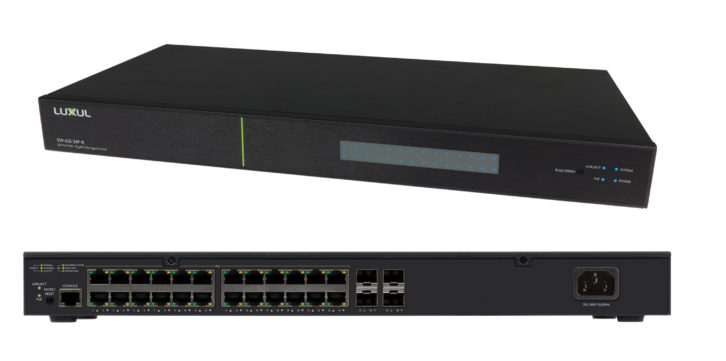
Granted, many people won’t care about the fan noise or blinking LEDs with the switch tucked away in a rack somewhere, but it can coexist if you do need to put it in an area that is occupied.
At this point, the switch was up and running and totally functioning, but because it is a managed switch, there is an extensive, password-protected Web-based GUI to access the configuration.
One configuration every installer should make is labeling each port in the GUI so you can more easily locate them later. Not only is this super helpful when using ProWatch, it also makes the life of anyone coming behind you easier.
Of course, managed switches give you far more control over nearly every aspect of your network. Admittedly, I am not a network expert, and there are numerous configuration options here I didn’t fully grasp, but that will thrill your geekiest IT guy. Luxul kindly includes help prompts in the form of a white “?” next to each item that offers an explanation in plain English, frequently with a jump to an internal glossary to explain a term. For example, clicking the “?” next to MVR explains that it is Multicast VLAN Registration, and why you would want to use it. Will this make you a network expert if you aren’t one already? No, but it will give you a sense of what you are looking at as you navigate the configurations.
There are certainly some standout options worth mentioning that will be beneficial on many installs. First, the switch can support up to 4095 (yes, over 4000) VLANs for segregating traffic from control systems, video distribution, cameras, guest network, etc. Second, there are a host of quality of service (QoS) adjustments, including IGMP Snooping (Internet Group Management Protocol), that will allow you to save massive amounts of network overhead and prioritize traffic for the best experience when doing things like streaming or video distribution. Third, besides just being able to monitor and prioritize PoE power handling, there are some nice PoE reboot features that can address and correct problems before your client is even aware of them. Things like PoE scheduling that can be used to configure automatic reboots of certain ports or if you wanted to turn certain ports off at night, as well as a PoE Auto Check feature that allows the switch to ping the IP of the device connected on a specific port; if the device doesn’t respond, the switch can be configured to reboot it.
Finally, all three of these new switches work seamlessly with Just Add Power’s JAPConfig software via a new driver for the company’s AV-over-IP distribution. Just Add Power’s sales team manager, Taft Stricklin, says these new switches “are perfect for single-switch systems with fewer than 50 AV-over-IP devices on the network.”
Unique Uses
While you’ll likely reserve the 24- and 48-port switches for larger projects, the new compact 04P and 05PD switches offer enough cool flexibility that you’ll likely use them on many projects, and I thought I’d call out a couple of use options for them.
Both devices are roughly 3.9 inches x 3.9 inches x 1 inch (L x W x H), making them small and thin enough to put about anywhere. The 04P has a single, non-powered uplink input along with four PoE+ outputs with a total power budget of 58 watts. This little guy worked perfect when mounted to the wall of a closet where I used it to power a whole room full of PowerShades PoE-powered shades (review coming).
The 05PD powers via PoE+, meaning it can go places where getting access to power is difficult. Not only that, but it features a single PoE output to power one device up to 15 watts. While that 15 watts doesn’t leave a ton of overhead if you’re powering a big WAP, it should be enough to do it under all but the most extreme use cases. The 05PD was the perfect solution for my bedroom, where I have a Kaleidescape M300, a Control4 EA1, and Dish Joey wall-mounted behind an LG OLED. Adding an additional power plug for a traditional switch would be a real hassle, so the 05PD allowed me to give a hardwired connection to all of my devices with no additional power required!
Since receiving my review devices, I’ve used these on actual installations. We had a customer wanting to add a network switch in a remote pool house where all we had was a single Ethernet cable. By adding the 04P to his rack, I took that PoE+ output to power the remotely located-05D and then used its single PoE output to power a local Control4 touchscreen! This was a perfect, real-world use of these devices at a price that the customer was thrilled to pay.
With retail pricing of just over $100 each, these are the perfect option when you need some PoE+ power to fire up a few devices on a job, don’t have the space for four separate power injectors, or can’t access local power.
Performance
No real surprise, my network worked great while using these switches. Never had any power issues from PoE, any Wi-Fi problems, or any performance issues during streaming or when using my network-intensive Kaleidescape.
Looking out beyond my install, I’m thinking how these switches would come into play on larger projects. My company is a Luxul dealer, and virtually all of our installations feature Luxul XAP-1510, 1440, and 1610 WAPs, frequently six or more per install. With each of these WAPs comes a fair-sized power supply brick that we have to account for in our rack and wiring. Having all of those PoE+ ports available will really clean this up on future projects, letting us get rid of all of those bricks and have nicer wire runs.
I asked Luxul how many of these high-power WAPs the SW-610-24P could support, and the short answer was 24; one on each port. The switches are budgeted to support 15 watts per port (15 x 24 = 370 watts for the 24-port; 15 x 48 = 720 watts for the 48 port), which, under most uses, should be enough to power up to 24 WAPs.
However, the worst-case peak power of an XAP-160 is 26.1 watts, say if you had a large party where there were tons (say 100) of people connected to a specific WAP, or you had loads of people (say 50) all streaming an HD video from a single WAP, that could go up. If you were running the switch at its full power capacity, there would be no headroom to support a WAP asking for more, so Luxul said the “safe” maximum to allow a bit of headroom would be 20. (Which, honestly, if you have a project that requires 20 high-power WAPs, you probably won’t be using a single 610-24P anyway…) Also, a drawback of running the switch at full-out power it that it will run hotter, producing more fan noise.
Finally, all of these new managed switches are Luxul ProWatch Integrated, meaning they offer full remote access and control. (A Luxul ProWatch+ device, such as one of the company’s routers, is still required to take advantage of this.) It was great to be able to tunnel into the system and check settings, or be able to reboot a port if need be; something that could 100 percent save you a truck roll.
Another big bonus is Luxul’s free lifetime U.S.-based tech support and firmware upgrades, along with a three-year hardware warranty. Not too shabby for a product expected to have a 24/7/365 operational life as the backbone of a home’s network. And when working on a complex project, having support you can reach out to and access is invaluable.
When you factor in the configuration features, number of full PoE+ ports, and overall power budget, uplink speeds, and remote accessibility of these new managed switches, plus the creative uses and applications for the new compact models, there is a ton about these new Luxul models to get excited about, and they are definitely worth looking into.
801-822-5450; LegrandAV.com/products/luxul
Kudos: Huge host of configuration options; plenty of PoE+ power; quiet operation; ProWatch Integrated
Concerns: None
Product Specs (SW-610-24P-R):
- 24 PoE+ rear-facing Gigabit Ports
- 370-watt total PoE budget
- 4 SFP+ Ports; aggregatable up to 40 Gbps
- PoE self-healing with auto-recovery and power scheduling
- L2/L3 support
- Optimized for AV-over-IP applications (including support for Just Add Power)
- Luxul ProWatch Integrated
- Lifetime U.S.-based tech support with 3-year hardware warranty

